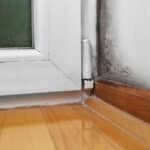
The generalized inspection of a home is concerned with a safe water supply system, an adequate drainage system, and ample and proper fixtures and equipment. This article explains features of a residential plumbing system, and the basic plumbing terms any inspector must know and understand to properly identify housing code violations involving plumbing and the more complicated defects that s/he will refer to the appropriate agencies. Tennessee Inspection Services is sufficiently trained to spot complicated defects that others will overlook.
Definitions
Air Chambers
Air Gap (Drainage System)
Air Gap (Water Distribution System)
Air Lock
Backflow
Back Siphonage
Branch
Branch Vent
Building Drain
Cross Connection
Disposal Field
Drain
Flood Level Rim
Flushometer Valve
Flush Valve
Grease Trap
Hot Water
Insanitary
Interceptor
Leader
Main Vent
Main Sewer
Pneumatic
Potable Water
P & T (Pressure and Temperature) Relief Valve
P-Trap
Public Sewer
Relief Vent
Septic Tank
Sewerage System
Soil Pipe
Soil Stack
Stack Vent
Storm Sewer
Trap
Vacuum Breaker
Vent Stack
Water Hammer
Water Service Pipe
Water Supply System
Wet Vent
Yoke Vent
Main Features of an Indoor Plumbing System
The primary functions of the plumbing system within the house are as follows:
- To bring an adequate and potable supply of hot and cold water to the users of the dwelling.
- To drain all waste water and sewage discharged from these fixtures into the public sewer, or private disposal system.
It is, therefore, very important that the housing inspector familiarize himself fully with all elements of these systems so that he may recognize inadequacies of the structure’s plumbing as well as other code violations.
Elements of a Plumbing System
Water Service: The piping of a house service line should be as short as possible. Elbows and bends should be kept to a minimum since these reduce the pressure and therefore the supply of water to fixtures in the house. The house service line should also be protected from freezing. The burying of the line under 4 feet of soil is a commonly accepted depth to prevent freezing. This depth varies, however, across the country from north to south. The local or state plumbing code should be consulted for the recommended depth in your area of the country.
The materials used for a house service may be copper, cast iron, steel or wrought iron. The connections used should be compatible with the type of pipe used.
- Corporation stop: The corporation stop is connected to the water main. This connection is usually made of brass and can be connected to the main by use of a special tool without shutting off the municipal supply. The valve incorporated in the corporation stop permits the pressure to be maintained in the main while the service to the building is completed.
- Curb stop: The curb stop is a similar valve used to isolate the building from the main for repairs, nonpayment of water bills, or flooded basements. Since the corporation stop is usually under the street and would necessitate breaking the pavement to reach the valve, the curb stop is used as the isolation valve.
- Curb stop box: The curb stop box is an access box to the curb stop for opening and closing the valve. A long-handled wrench is used to reach the valve.
- Meter stop: The meter stop is a valve placed on the street side of the water meter to isolate the meter for installation or maintenance. Many codes require a gate valve on the house side of the meter to shut off water for house plumbing repairs. The curb and meter stops are not to be used frequently and can be ruined in a short time if used very frequently.
- Water meter: The water meter is a device used to measure the amount of water used in the house. It is usually the property of the city and is a very delicate instrument that should not be abused. Since the electric system is usually grounded to the water line, a grounding loop-device should be installed around the meter. Many meters come with a yoke that maintains electrical continuity even though the meter is removed.
Hot and Cold Water Main Lines: The hot and cold water main lines are usually hung from the basement ceiling and are attached to the water meter and hot-water tank on one side and the fixture supply risers on the other. These pipes should be installed in a neat manner and should be supported by pipe hangers or straps of sufficient strength and number to prevent sagging. Hot and cold water lines should be approximately 6 inches apart unless the hot water line is insulated. This is to insure that the cold water line does not pick up heat from the hot water line. The supply mains should have a drain valve or stop and waste valve in order to remove water from the system for repairs. These valves should be on the low end of the line or on the end of each fixture riser.
The fixture risers start at the basement main and rise vertically to the fixtures on the upper floors. In a one-family dwelling, riser branches will usually proceed from the main riser to each fixture grouping. In any event the fixture risers should not depend on the branch risers for support but should be supported with a pipe bracket. Each fixture is then connected to the branch riser by a separate line. The last fixture on a line is usually connected directly to the branch riser.
Water Heaters: Water heaters are usually powered by electricity, fuel oil, gas, or in rare cases, coal or wood. They consist of a space for heating the water and a storage tank for providing hot water over a limited period of time. All hot water heaters should be fitted with a temperature-pressure relief valve no matter what fuel is used. This valve will operate when either the temperature or the pressure becomes too high due to an interruption of the water supply or a faulty thermostat.
Pipe Sizes: The size of basement mains and risers depends on the number of fixtures supplied. However, a 3/4-inch pipe is usually the minimum size used. This allows for deposits on the pipe due to hardness in the water and will usually give satisfactory volume and pressure.
Drainage System
The water supply brought into the house and used is discharged through the drainage system. This system is either a sanitary drainage system carrying just interior waste water or a combined system carrying interior waste and roof runoff.
Sanitary Drainage System: The proper sizing of the sanitary drain or house drain depends on the number of fixtures it serves. The usual minimum size is 6 inches in dial diameter. The materials used are usually cast iron, vitrified clay, plastic, and in rare cases, lead. For proper flow in the drain the pipe should be sized so that it flows approximately one-half full. This ensures proper scouring action so that the solids contained in the waste will not be deposited in the pipe.
- Sizing of house drain – The Uniform Plumbing Code Committee has developed a method of sizing of house drains in terms of “fixture units.” One ”fixture unit” equals approximately 71 D2 gallons of water per minute. This is the surge flow-rate of water discharged from a wash basin in 1 minute. All other fixtures have been related to this unit.
Sanitary Drain Sizes
- Grade of house drain – A house drain or building sewer should be sloped toward the sewer to ensure scouring of the drain. The usual pitch of a house or building sewer is 1 D4 inch fall in 1 foot of length.
- Fixture and branch drains – A branch drain is a waste pipe that collects the waste from two or more fixtures and conveys it to the building or house sewer. It is sized in the same way as the house sewer, taking into account that all water closets must have a minimum 3-inch diameter drain, and only two water closets may connect into one 3-inch drain.
All branch drains must join the house drain with a “Y” -type fitting. The same is true for fixture drains joining branch drains. The “Y” fitting is used to eliminate, as much as possible, the deposit of solids in or near the connection. A build-up of these solids will cause a blockage in the drain.
- Traps – A plumbing trap is a device used in a waste system to prevent the passage of sewer gas into the structure and yet not hinder the fixture’s discharge to any great extent. All fixtures connected to a household plumbing system should have a trap installed in the line.
The effect of sewer gases on the human body are known; many are extremely harmful. Additionally, certain sewer gases are explosive. A trap will prevent these gases from passing into the structure. The depth of the seal in a trap is usually 2 inches. A deep seal trap has a 4-inch seal.
There are many manufacturers of traps, and all have varied the design somewhat. The “P” trap is usually found in lavatories, sinks, urinals, drinking fountains, showers, and other installations that do not discharge a great deal of water.
Drum trap
The drum trap is another water seal-type trap. They are usually used in the 4×5-inch or 4×8-inch sizes. These traps have a greater sealing capacity than the “P” trap and pass large amounts of water quickly. Drum traps are commonly connected to bathtubs, foot baths, sitz baths, and modified shower baths.
Objectionable traps
The “S” 1 and the 3h “S” trap should not be us in plumbing installations. They are almost impossible to ventilate properly, and the 3h “S” trap forms a perfect siphon.
The bag trap, an extreme form of “S” trap, is seldom found.
Any trap that depends on a moving part for its effectiveness is usually inadequate and has been prohibited by the local plumbing codes. These traps work, but their design usually results in their being higher priced than the “P” or drum traps. It should be remembered that traps are used only to prevent the escape of sewer gas into the structure. They do not compensate for pressure variations. Only proper venting will eliminate pressure problems.
Ventilation
A plumbing system is ventilated to prevent trap seal loss, material deterioration. and flow retardation.
Trap Seal Loss
The seal in a plumbing trap may be lost due to siphonage (direct and indirect or momentum), back pressure, evaporation, capillary attraction, or wind effect. The first two named are probably the most common causes of loss. If a waste pipe is placed vertically after the fixture trap, as in an “S” trap, the waste water continues to flow after the fixture is emptied and clears the trap. This is caused by the pressure of air on the fixture water’s being greater than the pressure of air in the waste pipe. The action of the water discharging into the waste pipe removes the air from that pipe and thereby causes a negative pressure in the waste line. In the case of indirect or momentum siphonage, the flow of water past the entrance to a fixture drain in the waste pipe removes air from the fixture drain. This reduces the air pressure in the fixture drain, and the entire assembly acts as an aspirator such as the physician uses to spray an infected throat.
Back Pressure
The flow of water in a soil pipe varies according to the fixtures being used. A lavatory gives a small flow and a water closet a large flow. Small flows tend to cling to the sides of the pipe, but large ones form a slug of waste as they drop. As this slug of water falls down the pipe the air in front of it becomes pressurized. As the pressure builds it seeks an escape point. This point is either a vent or a fixture outlet. If the vent is plugged or there is no vent, the only escape for this air is the fixture outlet. The air pressure forces the trap seal up the pipe into the fixture. If the pressure is great enough the seal is blown out of the fixture entirely. Figures 6-17 and 6-18 illustrate this type of problem.
Vent Sizing
-
Individual fixture ventilation: This type of ventilation is generally used for sinks, lavatories, drinking fountains, and so forth
-
Unit venting: The unit venting system is commonly used in apartment buildings. This type of system saves a great deal of money and space when fixtures are placed back to back in separate apartments.
-
Wet venting: Wet venting of a plumbing system is common in household bathroom fixture grouping. It is exactly what the name implies: the vent pipe is used as a waste line.







